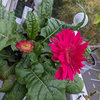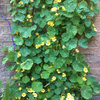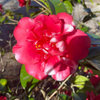Apetalous Zinnias
christie_sw_mo
11 years ago
More Discussions
I saved seeds from Zowie Yellow Flame last summer and have a couple dozen blooming now. I know not to expect them to look like the parent but I like surprises and was anxious to see what they looked like anyway.
They are a few that have blooms very much like the parent, and some with a little different coloring from Zowie but there are also some (about 1/4 of the plants) that have no petals.
In searching through some old posts, I found the term apetalous. I assume Zowie was a hybrid and that's what caused it. Is that right?
Mostly I'm wondering which ones I'm better off saving seeds from, the ones that LOOK like Zowie, the original Zowies (I have some of those too), or the ones without petals. Will I still get apetalous zinnias if I save seeds from the new generation of seedlings? I don't mind having a few without petals, but in general, they aren't very showy and I'd rather have petals.





zen_man
christie_sw_moOriginal Author
Related Professionals
Holly Springs Landscape Architects & Landscape Designers · 70037 Landscape Architects & Landscape Designers · Mountain Brook Landscape Architects & Landscape Designers · Roxbury Crossing Landscape Architects & Landscape Designers · Peabody Landscape Contractors · Arlington Landscape Contractors · Fort Wayne Landscape Contractors · Gurnee Landscape Contractors · Kailua Landscape Contractors · Newberg Landscape Contractors · Irvington Landscape Contractors · Freehold Decks, Patios & Outdoor Enclosures · Pittsburgh Decks, Patios & Outdoor Enclosures · Riverside Decks, Patios & Outdoor Enclosures · Glendale Decks, Patios & Outdoor Enclosureszen_man